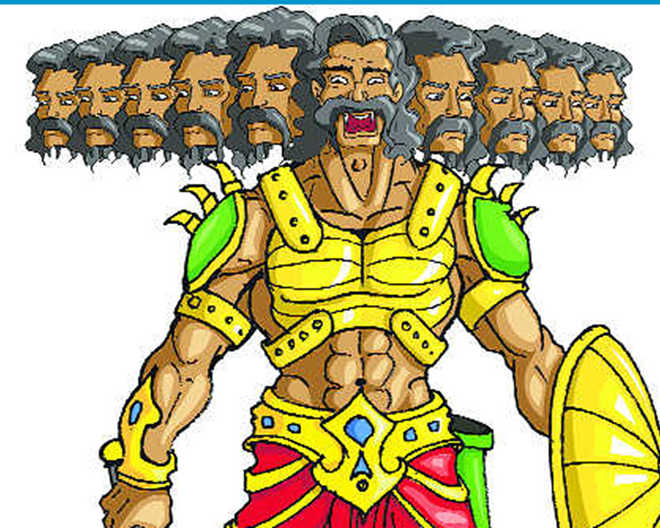Renu Sud Sinha
I am Raavan.
I want it all.
I want fame. I want power. I want wealth.
I want complete triumph.
Even if my Glory walks side by side with
my Sorrow.
THe man has had a bad press of epic proportions and not only in epics. For centuries, in our ancient texts and modern mindsets, especially in North India, Raavan has been the embodiment of evil that has to be defeated by the good for humanity to survive and continue — Dasehra being an annual reminder. This interpretation in terms of black and white has been reinforced ad nauseum by our Hindi TV serials.
In his latest book Raavan: Enemy of Aryavarta (Book III of the Ram Chandra series), Amish has sought to understand and explain one of the darkest characters in our mythology outside the familiar binaries of right or wrong, without offering any judgement.
In most popular versions of the Ramayana and the Tulsidas's Ramcharitmanas and their numerous translations and retellings, there is only one perspective — of Ram. All other characters, major or minor, are mere tools to justify his dharma and glory. However, Amish, whose grandfather was a scholar of Sanskrit and a pandit in Varanasi, has gone further back to our ancients texts as his reference material — Adbhut Ramayana, Valmiki Ramayana, Ananda Ramayana, Ramayana Darshanam, etc. Because our ancestors did not have a simplistic take on life, they were more inclusive in their approach. Hence our ancient texts believed in more than one truth.
Amish, known for exploring mythology through his unconventional narrative, has thus offered a nuanced version of Indian mythology's much maligned villain. His Raavan is a dark character, no doubt, but he is a great scholar, an artiste who creates art through his music and paint strokes alike.
Unloved son of a rishi, this Raavan is a survivor, who protects his infant brother and mother from his father's wrath and death. A pragmatic pirate, a great war strategist, he is a great provider for those he rule. An extremely violent man, he can kill in cold blood without remorse and can love without hope beyond eternity. A devout follower of Shiva, he wrote hymns on the Lord that are sung and celebrated even today.
Written in a multi-linear narrative, Raavan... follows Ram: Scion of Ikshvaku and Sita: Warrior of Mithila, as part of a five-book series. A well-researched book, it starts from Raavan's birth and ends at his kidnapping of Sita as have the previous two novels. Book 4 onwards the narrative will merge to form a single story.
Amish has not only shown Raavan as a multidimensional character, but has done justice to Kumbhakarana as well. He comes across quite different than usually depicted. A decent man, he tries to make his brother follow the path of dharma. His only flaw is his extreme love for Raavan.
Has he shown Raavan as a flawed hero? Amish has certainly not depicted him as an evil character who must be burnt every year but as someone who let his rage and ego get the better of the monster inside him.
The book is also an attempt in differentiating the path between greatness and success. While you do need a fire in the belly to succeed, the successful use it for their own benefit, while the truly great use it for the greater good. That's why Ram is worshipped as God and Raavan burnt as demon.









